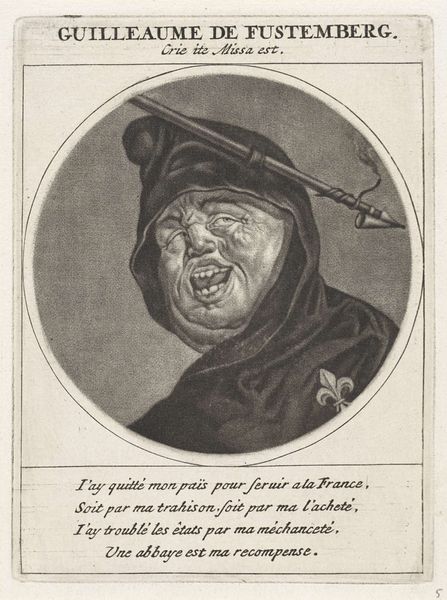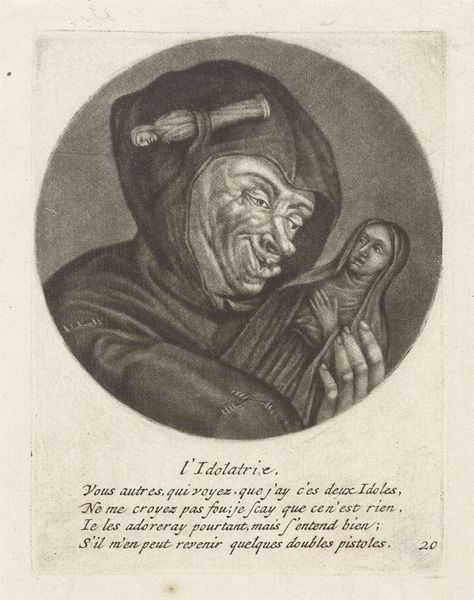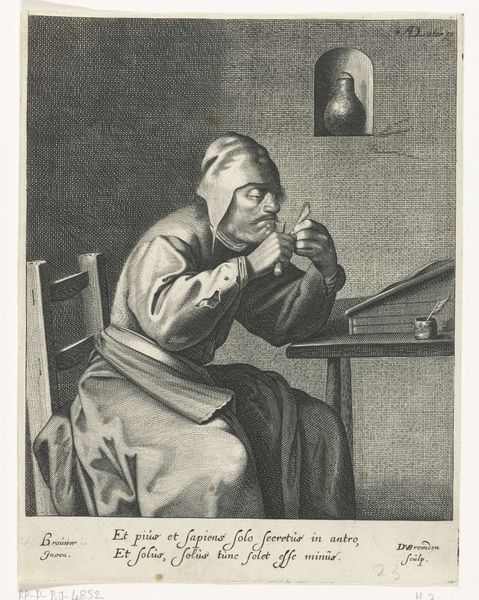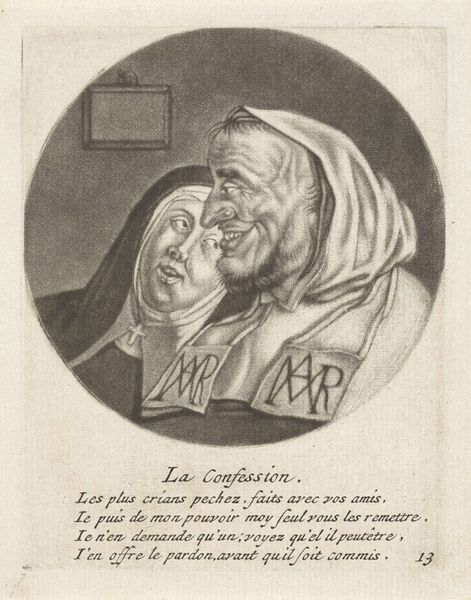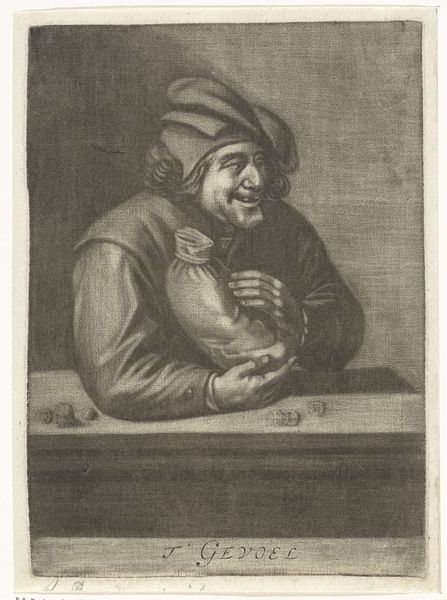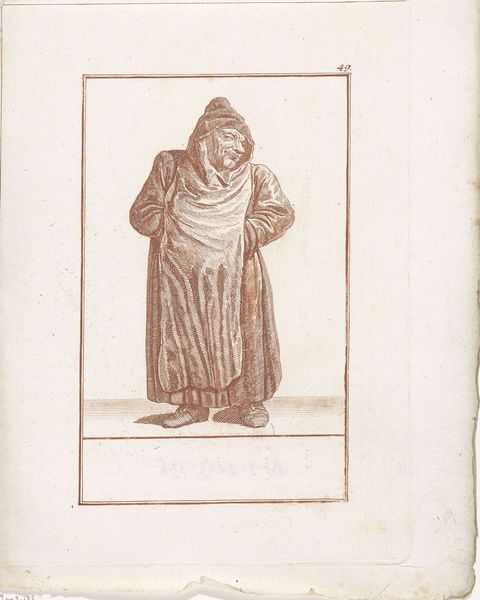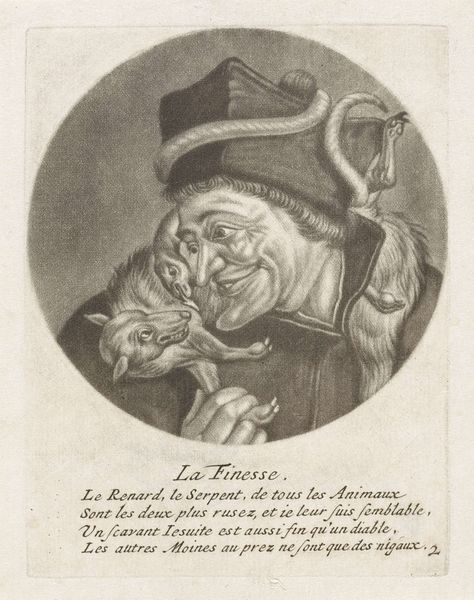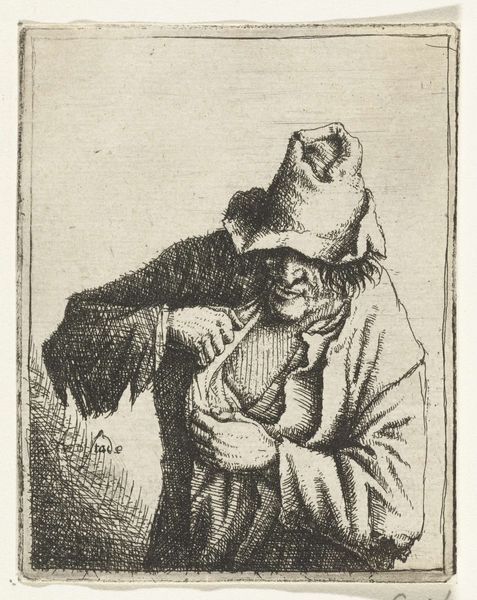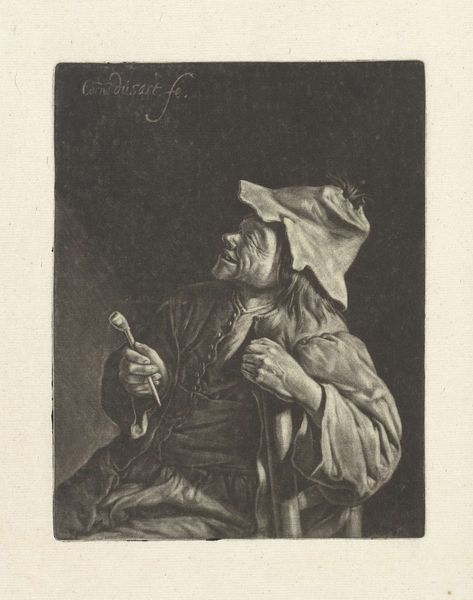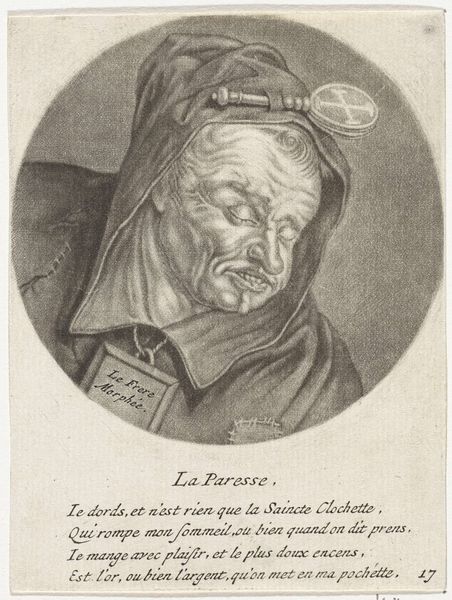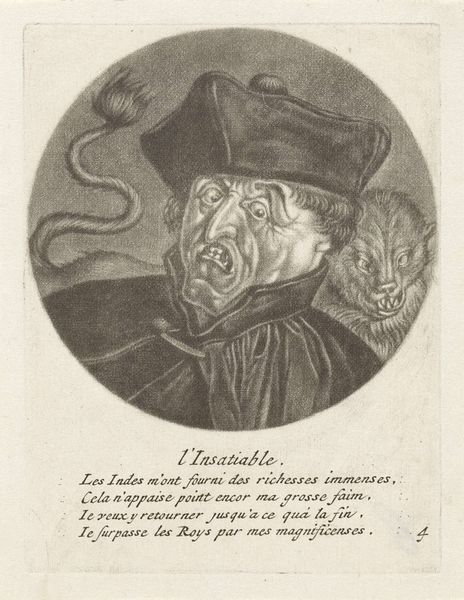
engraving
#
portrait
#
medieval
#
narrative-art
#
old engraving style
#
11_renaissance
#
portrait reference
#
limited contrast and shading
#
portrait drawing
#
engraving
#
monochrome
Dimensions: height 115 mm, width 90 mm
Copyright: Rijks Museum: Open Domain
Curator: This engraving, “Monnik met een uil,” or “Monk with an Owl,” attributed to Jacob Gole, was likely created sometime between 1670 and 1724. It is an interesting portrait on view here at the Rijksmuseum. Editor: Intensely unsettling. The lines seem etched with distress. It has a stark, monochrome aesthetic and this, combined with the tight circular framing, emphasizes the monk's rather tortured expression. Curator: Consider the engraving process, where lines are physically carved into a plate. The quality of the line becomes paramount; think about how the density and direction of lines, worked in such a process, produce shadow, texture, and convey the emotional weight we see. How might Gole’s specific tools or workshop practices shaped this very affective quality, here? Editor: Yes, but beyond the making process, the formal composition itself creates tension. The figure dominates the pictorial space, that tight crop enhancing his prominent grimace. Notice the opposing textures: the smooth owl feathers against the rough, lined skin of the monk. It creates a powerful visual discord. Curator: The text inscribed below, hints at his role as "l'Espion de l'Inquisition"—a spy—which gives further nuance to these formal choices, because now this is not an austere medieval depiction; instead, it makes a complex political argument, doesn't it? It engages social commentaries regarding the role of spies for the Inquisition. We see criticism embedded in the means of production, how subversive to make something in monochrome using print. Editor: I appreciate how this work presents the theme, how Gole uses portrait conventions. The engraving shows an unconventional figure type—this inquisitor—with a visual dialogue established by the artist. The overall composition asks what exactly the relation between visual art and emotional interpretation is. Curator: By acknowledging the material and societal components—and understanding its method, materials, production of prints and reproduction practices—we grasp art as cultural work. Editor: Perhaps but, ultimately, what sticks with me is that stark emotional intensity born from contrasting forms; and that is how an art piece makes such a poignant appeal.
Comments
No comments
Be the first to comment and join the conversation on the ultimate creative platform.
